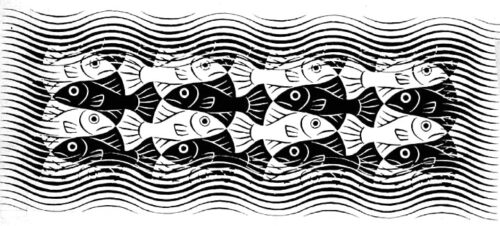Joe – Uh, how you gonna get down to the shore?
Rod – Funny you should ask, I’ve got a car now.
Joe – Oh wow, how’d you get a car?
Rod – Oh my parents drove it up here from the Bahamas.
Joe – You’re kidding!
Rod – I must be, the Bahamas are islands, okay, the important thing now, is that you ask me what kind of car I have.
Joe – Uh, what kinda car do ya’ got?
Rod – I’ve got a BITCHIN CAMARO!
The most dangerous actors aren’t the incompetent or the overtly malicious, they’re the genuinely skilled professionals who understand that what they’re doing serves no legitimate purpose but continue doing it well.
Admiral Holsey stepping down suggests at least one officer has decided not to be that person.
Alvin Holsey, Admiral Who Oversaw Boat Strikes Off Venezuela’s Coast, Retires: The admiral had abruptly announced that he would step down as the head of the U.S. Southern Command.
Understanding why requires looking back fifty years.
Creighton Abrams was arguably the most capable American tactical commander since Ulysses Grant. Both demonstrated mastery of logistics, both operated under severe political constraints, and both accepted operational risks their predecessors had avoided.

A critical difference between these two men lay in civil-military alignment: Grant’s civilian leadership shared his strategic objectives, while Abrams served an administration whose domestic political imperatives systematically undermined coherent strategy.
The constitutional position on Abrams’ tactical work under President Nixon is unambiguous. Congress never authorised military operations in Cambodia; the Gulf of Tonkin Resolution’s writ extended to Vietnam alone. More significantly, the military maintained dual reporting systems that recorded ordnance falling on South Vietnamese coordinates when it actually struck Cambodian territory.
This went far beyond unauthorised action into being a deliberate falsification designed to deceive the branch constitutionally empowered to declare war.
A crime.
It occurred within a broader pattern: Nixon had intervened to obstruct the 1968 Paris peace negotiations to secure electoral advantage, then required the war’s continuation through 1972 for re-election. American casualties served the GOP’s domestic political purposes, literally throwing soldiers’ lives away to win votes.
Abrams’ role was executing Nixon’s strategically incoherent and illegal policies whose consequences extended far beyond military failure. The destabilisation of Cambodia, while not solely attributable to American mistakes, was materially accelerated by it, contributing to state collapse that enabled Khmer Rouge consolidation and genocide.

Abrams’s culpability should not be reduced to mere order-following. The Abrams Tapes, declassified two decades after his death, demonstrate that he understood the conflict was “basically a political contest.” His failure was therefore not one of comprehension but of institutional role: generals propose military solutions because military solutions are what generals are positioned to propose. His legitimate concern, that American withdrawal was outpacing South Vietnamese military capacity, was correct. His proposed remedy, however, reflected the persistent American misapprehension that a complex insurgency with deep political roots could be addressed through conventional operations against geographic sanctuaries.
The hunt for COSVN epitomised this confusion. American planners conceived of a simplistic targetable headquarters, a “jungle Pentagon”, despite evidence they faced a distributed network of cadres. Nixon’s “Vietnamization” plan compounded this Americanization error by treating military capability as the binding constraint when the fundamental problem was political legitimacy. The Saigon government’s inability to command popular loyalty was never a problem that American firepower could resolve, especially from 90,000 feet.
The sixty-day operational limit also telegraphed the campaign’s own negation plan. Any adversary capable of basic strategic patience would disperse, wait, and return on schedule. That anyone would claim American success was measurable in captured rice and destroyed bunkers merely confirmed total absence of meaningful strategic metrics. The North Vietnamese simply relocated deeper into Cambodia, the Cambodian state authority collapsed further, and so the Khmer Rouge recruitment accelerated.
Most damning is how the promised “breathing room” was a shrewd lie, exposing the American Ambassador Ellsworth Bunker in Saigon as a delusional sycophant. His saccharin cables consistently contradicted accurate CIA assessments and field reporting, to give Nixon what he wanted to hear instead of reality. The Paris agreement that Nixon celebrated as his gift to the world was immediately ignored and within months the North Vietnamese were rolling into Saigon after domestic American backlash had accelerated withdrawal timelines.
None of this absolves Hanoi’s strategic choices, Thieu’s venality, or the Khmer Rouge’s ideological pathology. It shows American ideological intervention created conditions that other actors easily exploited. Whether Abrams’s resignation, like Holsey’s, or public dissent would have altered this trajectory is unknowable. What remains clear is that his silence stands as complicity in an illegal campaign whose strategic bankruptcy he understood.
Nixon knew peace talks were potentially ending the war in 1968 but he convinced America to elect him by scuttling them. He repeatedly lied to the public and to South Vietnam to take power, which meant expansion and prolonging of war while declaring himself the anti-war leader. Tens of thousands more Americans were killed needlessly by him, just to abruptly abandon South Vietnam and let it fall catastrophically in 1975.
Cambodia’s genocide followed.
Abrams had to hide his knowledge that the President’s war plan was strategically bankrupt. Today Hegseth doesn’t have to hide anything because his audience doesn’t care.
The cruelty is the point now; the incompetence is a feature. You don’t need competent complicity when there’s no accountability mechanism left to evade. You just do the crimes, lie about them badly, contradict yourself publicly, and get rewarded because the crimes signal tribal loyalty.
The system that produced Abrams’s silence has decayed into one that produces Hegseth.
Admiral Holsey walked away. Under Trump there will always be someone who won’t.
Bitchin’ Camaro, bitchin’ Camaro
I ran over my neighbors
Bitchin’ Camaro, bitchin’ Camaro
Now I’m in all the papersMy folks bought me a bitchin’ Camaro
With no insurance to match
So if I happen to run you down
Please don’t leave a scratchI ran over some old lady
One night at the county fair
And I didn’t get arrested
Because my dad’s the mayorBitchin’ Camaro, bitchin’ Camaro
Donuts on your lawn
Bitchin’ Camaro, bitchin’ Camaro
Tony Orlando and DawnWhen I drive past the kids
They all spit and cuss
‘Cause I’ve got a bitchin’ Camaro
And they have to ride the busSo you’d better get out of my way
When I come through your yard
‘Cause I’ve got a bitchin’ Camaro
And an Exxon credit cardBitchin’ Camaro, bitchin’ Camaro
Hey man where ya headed?
Bitchin’ Camaro, bitchin’ Camaro
I don’t want unleaded
“Bitchin’ Camaro” by the Dead Milkmen, released on their debut album “Big Lizard in My Backyard” (1985).




